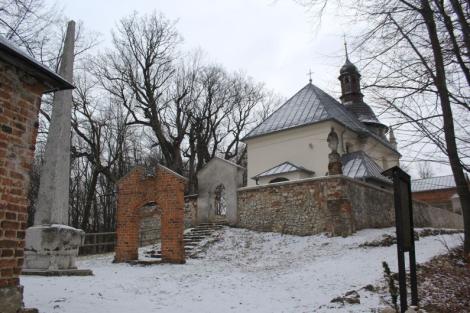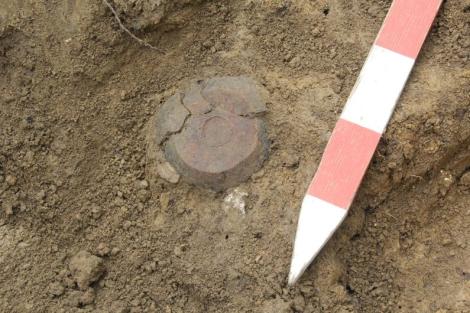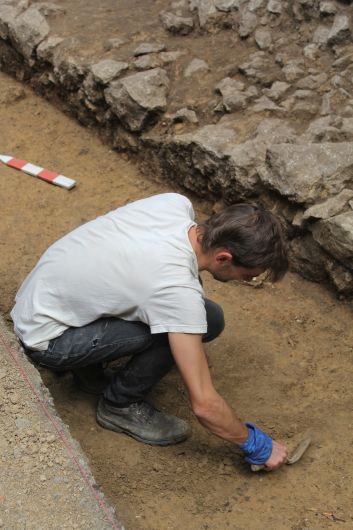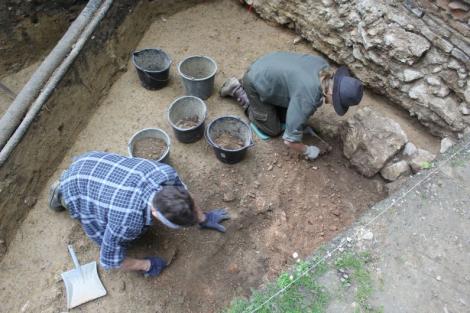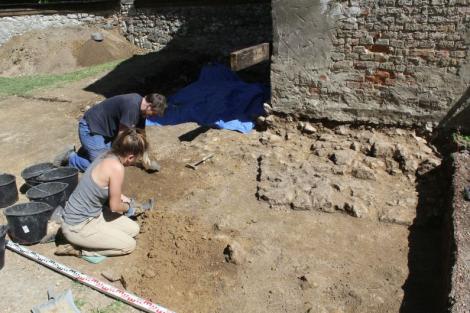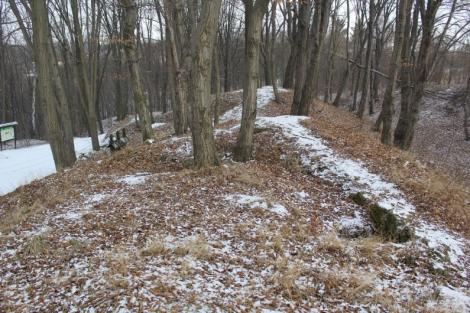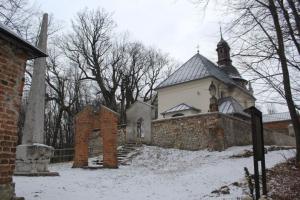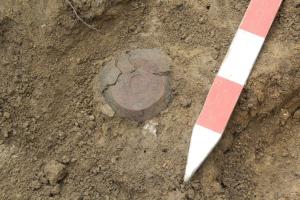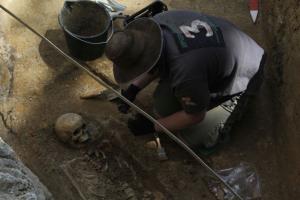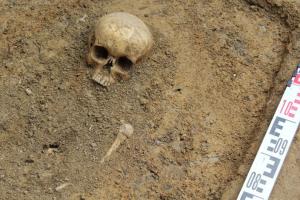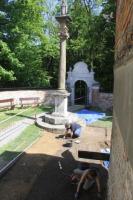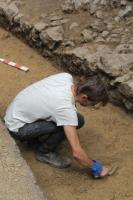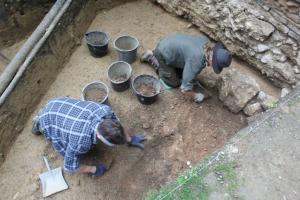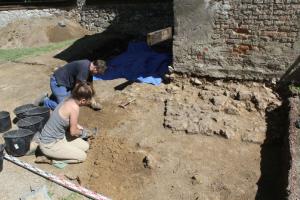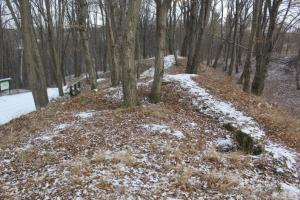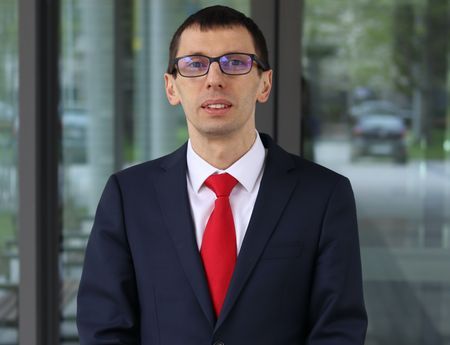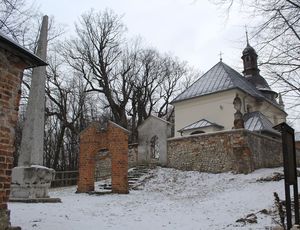
For three years archaeologists from Kraków have been carrying out excavations in Grodzisko hamlet near the town of Skała in Małopolska region. Their research aims to provide a definite answer to the question what was located in this place in the 13th century. According two the two competing hypotheses, it was either a fortified Poor Clares’ convent or a castle built by the Silesian Duke Henry the Bearded.
Today, the calcareous hill next to Prądnik river valley in Ojców National Park is the location of a complex of buildings and statues, mainly built in 1677-1691, commonly known as the Hermitage of Blessed Salomea (1211/1212 – 1268). The site has been studied several times, and the remains of much older masonry have been found within the baroque buildings as well as underground. Yet, the layout, character and exact dating of the older structures have remained a mystery, as no large scale excavations have been carried out at this site so far.
Some historians suggest that about 1260 this place could have been the seat of a Poor Clares’ convent associated with Blessed Salomea. Its foundation charter was issued by Duke Boleslaus the Chaste in 1257. Under constant threat of raids, the nuns decided to move to Kraków in the late 13th/early 14th century, when the region was in turmoil due to the struggle for the throne in Kraków. This period saw the movement of troops loyal to Henry Probus and Vladislaus the Elbow-High next to the convent, and the mercenaries of the Bishop of Kraków Jan Muskata, who sided with the Czech House of Premyslid and was later referred to as a “wolf with a crosier”, were also active in the region.
Another group of researchers believes that Grodzisko contains the remains of a castle built by the Silesian Duke Henry the Bearded in 1228, which was supposedly known by the name of “Skała” or “Skala” and functioned until the late 13th/early 14th century. According to another, rather isolated, opinion, the hill was the location of a castle of Duke Leszek the Black or Henry Probus, which was undocumented in historical sources. Dr Michał Wojenka from the Jagiellonian University Institute of Archaeology, who leads the ongoing excavations, claims that this hypothesis lacks any historical validity.
“In our current research we do our best not to favour any of the hypotheses. The results to date suggest that the one about the convent it is most likely to be true. Yet, we shouldn’t jump to any conclusions, as large scale excavations are needed to further investigate the matter”, explains Dr Wojenka.
The archaeologists from Kraków have been working in Grodzisko since 2016. Their research would not be possible if not for the support from Rev. Stanisław Langer, who is in charge of the site, and the help from Dr. Henryk Pachla and KROZ company, who conduct restoration works at the complex. During the first season of excavations, the researchers found the vaults of a medieval basement under the floor of the so-called “chaplain’s house” and later discovered the remains of walls built of calcareous stones cemented with clay. According to Dr Wojenka, part of them could have provided the base for a wooden or half-timbered building. The remains of other walls indicate that there was a building, which was over a dozen metres long and 3.5 metres wide, adjoined by other structures. The researchers are convinced that before anything was built at the site, the surface was leveled using large amounts of earth brought from other places.
“Many interesting finds have been discovered in the direct vicinity of the stone buildings. The dark earth includes lots of medieval relics and its surface layer contains burnt material, which suggests that there could have been a fire. We have found large amounts of pottery dated from the mid-13th to the early 14th century, iron spurs with rowels, a horse grooming comb, a number of clasps and buckles, as well as about 20 crossbow bolts and two coins”, Dr Wojenka reports.
“Generally speaking, there is much evidence suggesting that the site was destroyed in a raid, probably in the late 13th or early 14th century. This is yet another hint that in the Middle Ages it may have been home to a convent, as the much later beatification documents of Salomea, written in the 17th century, refer to a raid and a number of Poor Clare sisters falling victim to murder and rape. According to this source, several of the nuns even jumped into a well to avoid being dishonoured”, adds the researcher.
The excavations in Grodzisko are to be continued next year. The researchers are also planning to investigate an earthen rampart, partially reinforced with a stone wall, which is extremely fascinating from the point of view of the history of fortifications in medieval Poland. Dr Michał Wojenka stresses that many more years of studies are needed to fully explore the site.


